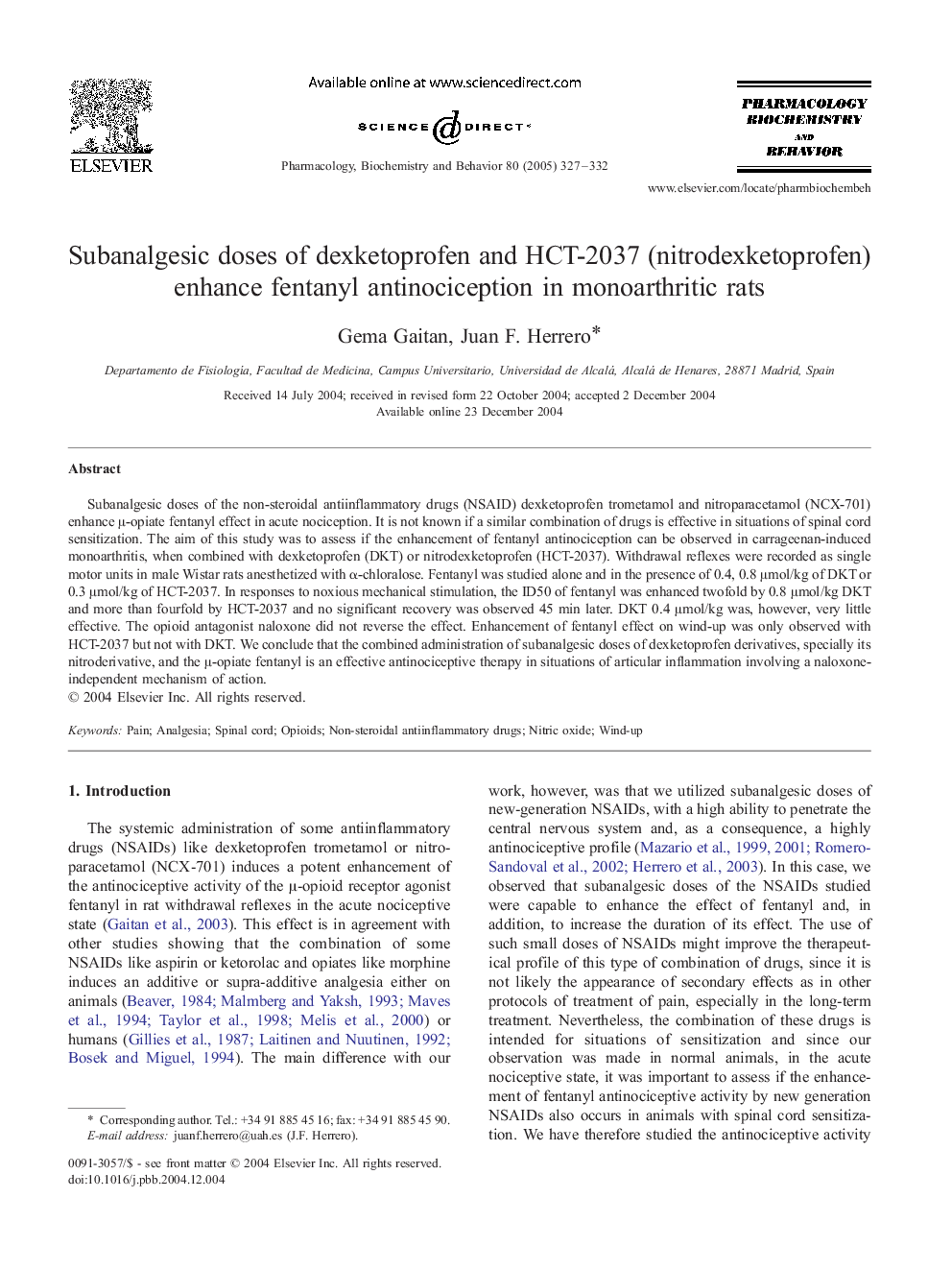| Article ID | Journal | Published Year | Pages | File Type |
|---|---|---|---|---|
| 10838822 | Pharmacology Biochemistry and Behavior | 2005 | 6 Pages |
Abstract
Subanalgesic doses of the non-steroidal antiinflammatory drugs (NSAID) dexketoprofen trometamol and nitroparacetamol (NCX-701) enhance μ-opiate fentanyl effect in acute nociception. It is not known if a similar combination of drugs is effective in situations of spinal cord sensitization. The aim of this study was to assess if the enhancement of fentanyl antinociception can be observed in carrageenan-induced monoarthritis, when combined with dexketoprofen (DKT) or nitrodexketoprofen (HCT-2037). Withdrawal reflexes were recorded as single motor units in male Wistar rats anesthetized with α-chloralose. Fentanyl was studied alone and in the presence of 0.4, 0.8 μmol/kg of DKT or 0.3 μmol/kg of HCT-2037. In responses to noxious mechanical stimulation, the ID50 of fentanyl was enhanced twofold by 0.8 μmol/kg DKT and more than fourfold by HCT-2037 and no significant recovery was observed 45 min later. DKT 0.4 μmol/kg was, however, very little effective. The opioid antagonist naloxone did not reverse the effect. Enhancement of fentanyl effect on wind-up was only observed with HCT-2037 but not with DKT. We conclude that the combined administration of subanalgesic doses of dexketoprofen derivatives, specially its nitroderivative, and the μ-opiate fentanyl is an effective antinociceptive therapy in situations of articular inflammation involving a naloxone-independent mechanism of action.
Related Topics
Life Sciences
Biochemistry, Genetics and Molecular Biology
Biochemistry
Authors
Gema Gaitan, Juan F. Herrero,
